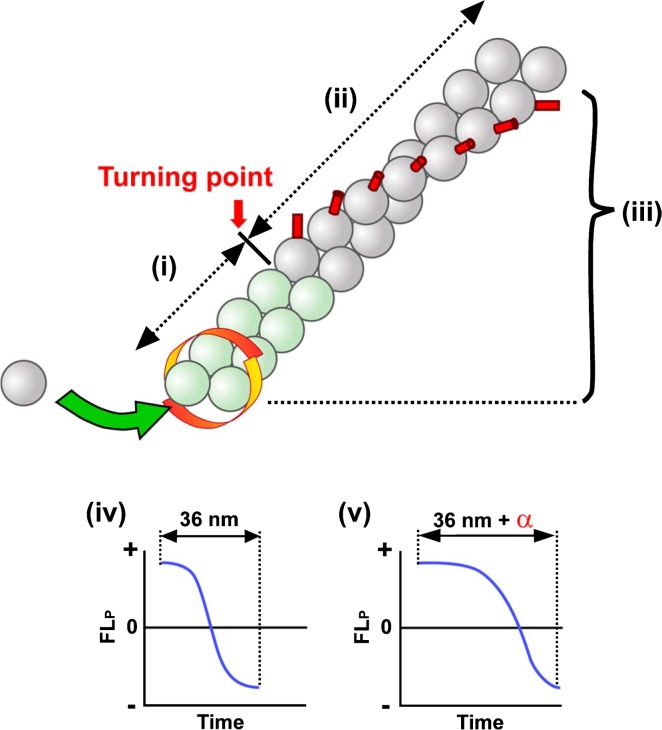Figure 3.
FLP measurement near the barbed end bound is required for revealing local twist of the processively elongation filament. The diagram shows an assumptive structure of a formin-bound filament which forms a relaxed helical structure locally near the barbed end (green actins). In this scheme, it is assumed that the filament structure shifts from the relaxed helix to the typical actin long-pitch helix at the turning point. It is also assumed that the distance between the barbed end and the turning point is constant. When TMR-actin exists in the region of green actins (i), alternation of FLP would not be observed. When TMR-actin is distal to the turning point (ii), FLP from TMR would alternate periodically according to the local twist of distal potion of the filament (iii). To detect the barbed end filament twist, one needs to precisely measure the timing of FLP alternations after TMR-actin is incorporated to the barbed end. If the local filament twist near the barbed end is similar to the typical F-actin twist (i.e. zero length for the relaxed green actin portion), FLP would start alternations without any delay after assembly (iv). The time to detect the first alternation of FLP would be extended if the barbed end filament is locally relaxed for certain distance (v). In practice, one cannot know the exact initial direction of TMR-actin at assembly, and might therefore need to measure a large number of FLP delay times to see whether filament twist near the barbed end deviates from the typical long-pitch actin helix.

